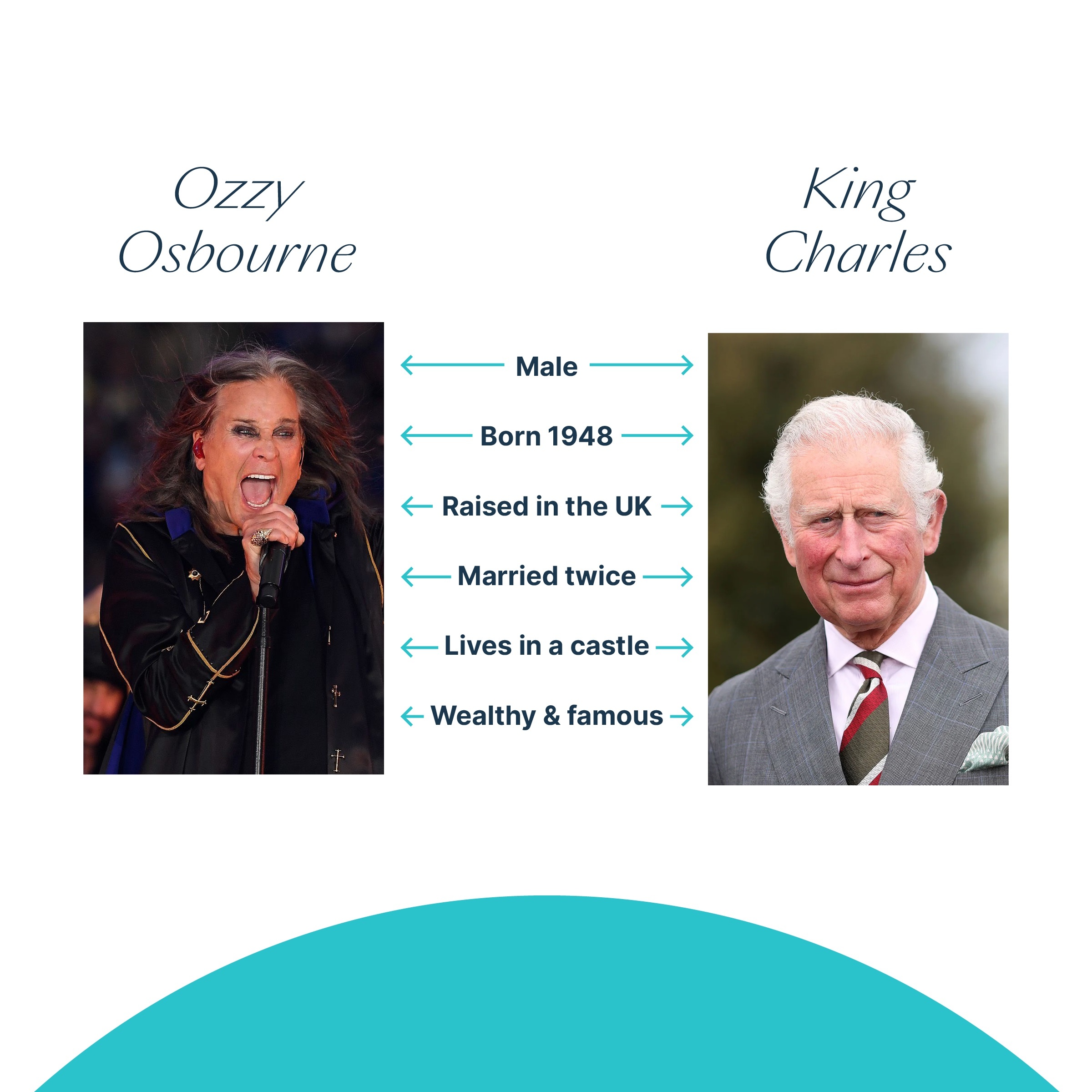
Have you seen the meme about King Charles and Ozzy Osbourne? On paper, these two wealthy men look strikingly similar. Both were born in 1948 and raised in the UK. Both have been married twice—and, pretty uniquely, both live in a castle.
But would you really design the same type of event for these two wildly different personalities? While certain surface-level demographics can be a great starting point, determining your event’s target audience needs to go much deeper, taking into account their interests, passions, habits, learning styles, and what they want to get out of your specific event gathering.
After all, understanding your audience inside and out is the single best way to build a memorable experience attendees will remember for years to come. Here are some tips for…
Determining Your Event's Audience
Picture your event day. Who is sitting in the audience? One of the very first things to do when creating an event is to identify your target attendees—because understanding who your event is for will help you tailor every aspect of it directly to them. Here are some steps to take:
- Define your purpose.
From your very first planning meetings, boil it down to two simple questions: What message are you trying to convey, and who needs to hear it? Your event might be designed for networking, education, entertainment, customer engagement, or a combination of these. Clearly defining your primary goals—like through SEQ’s comprehensive discovery process—will help you narrow down your target attendees and why they should care about this event.
- Conduct market research.
Next, work to gather insights about your potential attendees. This part can focus on demographic data—like age, gender, income, marital status, education level, and location—but it can also delve into more personalized things like hobbies and passions.
If you’ve held a similar event in the past, study the characteristics of attendees who were most engaged. Check out competitors’ events too: Who attended? Who was it promoted to, and on what platforms? What kind of engagement did these marketing efforts seem to receive?
- Build Fictional Personas
Put yourself in your attendees shoes, and make a persona for your ideal attendee. Include a range of details like their name, age, job, hobbies, and pain points. Imagine what they’re passionate about, what motivates them, and how they like to learn. This will humanize your target audience, making them more relatable and helping guide your event planning every step of the way.
Planning Events for Different Generations
A major factor in crafting these various attendee personas? Generational divides, of course. It’s certainly true that different generations often have unique perspectives and expectations when they come to events. Consider Gen Z, a demographic that many brands and event hosts are eager to reach right now.
Gen Z, born between 1997 and 2012, tends to be characterized by digital savviness, social consciousness, and desire for authenticity. So if you’re trying to reach younger event attendees and consumers, you might want to consider strong digital integrations with options like event apps, livestreams, and interactive social media engagement. Gen Z also tends to care deeply about environmental issues, so may pay close attention to your event’s sustainable practices, along with diversity, inclusivity, and authenticity.
But do you notice something here? Many of these same trends were ones discussed when millennials were coming of age, too. As we saw with King Charles and Ozzy Osbourne, generational demographics can be a useful starting point—but not the end-all-be-all. The key, in our view? Embracing the differences and finding common ground. Understand each generation’s differing perspectives, but always look for shared priorities and passions.
Avoiding Surface-Level Stereotypes
That’s where personalization comes in. Use data collected during registration to offer tailored content, networking opportunities, and event formats that will appeal to the majority of your attendees, regardless of age or other surface-level characteristics. After all, personalization makes attendees feel valued and more likely to return in the future.
Not sure what your target attendees care about? When in doubt, just ask! Before and after your event, gather feedback from attendees. Ask about their interests, preferences, and if applicable, what they found most valuable about previous events. It can also be useful to engage with your audience on social media and through online forums. Join conversations related to your event's key themes, and learn more about the topics and issues that matter most to them. (Pro tip: This can be a great way to formulate session topics and even find speakers!)
Struggling to identify the ideal audience for your next event or conference? SEQ can help. Connect with us today.